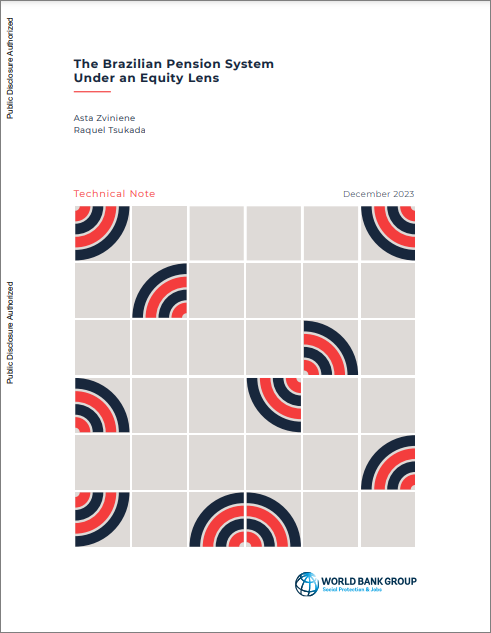
목차
Title page
Contents
ACKNOWLEDGMENTS 3
1. INTRODUCTION 7
2. OVERVIEW OF THE NATIONAL PENSION SYSTEM AND THE IMPACT OF 2019 REFORM 12
3. EQUITY IN THE BRAZILIAN NATIONAL PENSION SYSTEM 19
3.1. Differences in the duration of benefit receipt 22
3.2. The interaction of minimum pension level with contribution period requirements 29
3.3. Contribution rate differences and the role of taxation 37
3.4. Judicialization of benefit eligibility 42
4. SUMMARY OF THE FINDINGS 46
REFERENCES 51
ANNEX 1. REGIONAL DIMENSIONS OF AGING AND PENSION COVERAGE 52
Table 1. Number of RGPS and social assistance benefits paid by INSS in 2021 13
Table 2. Number of RGPS contributors and active beneficiaries, 2020 14
Table 3. RGPS and BPC retirement plans and benefit eligibility requirements (2023) 23
Table 4. Duration of benefit discontinued in 2019 and average value of benefits in 2021 26
Table 5. Eligibility thresholds and benefit amounts in poverty prevention programs for the elderly (BPC) and general population (Bolsa Familia), 2023 32
Table 6. Tax regime and social insurance coverage 38
Table 7. Treatment of pensions and pensioners under personal income tax and social security contributions 41
Table 8. Summary of proposed reforms and their impact on equity 49
Table 9. Characteristics of individual profiles used in figure 21 50
Figure 1. Cash expenditure on old-age and survivors' benefits: public schemes for OECD (2017) and Brazil (2019) 8
Figure 2. Old-age dependency ratio (65+/20-64): Brazil and high income country index 9
Figure 3. Overview of the Brazilian social security system 14
Figure 4. Urban (left) versus rural (right) RGPS revenues and benefits (2016-2022), in % of GDP 16
Figure 5. Projected revenues, expenditures, and deficits of RGPS 17
Figure 6. 'New 65' retirement age required to keep old age dependency rates constant 17
Figure 7. Nine elements affecting equity in the pension system 19
Figure 8. Share of workers retiring with different RGPS and BPC pensions 24
Figure 9. Number of urban pensions by length of contribution granted, by beneficiary's age group 25
Figure 10. Number of urban pensions by length of contribution granted, by sex of the insured, according to age groups 25
Figure 11. Terminated benefits as a share of total pension benefits in 2019 by age group (retirement by age benefits) 27
Figure 12. Statutory retirement ages for females and males in OECD and LAC countries 28
Figure 13. Share of RGPS and BPC pension benefits granted that are equal to minimum pension 31
Figure 14. Length of contribution periods of beneficiaries who retired with a minimum pension benefit in 2018 32
Figure 15. Internal rate of return by decile of contributions made for urban retirees with a minimum pension benefit in 2018 33
Figure 16. Consolidating the components of old-age pensions (BPC and rural pension) and the prorated minimum contributory pension guarantee 35
Figure 17. Noncontributory pension levels in OECD and LAC countries, in comparison with income per capita 36
Figure 18. Tax regime by income deciles 40
Figure 19. Evolution of benefit assignment by courts 43
Figure 20. Evolution of total value of benefits assigned through courts 45
Figure 21. Net present value of lifetime contributions and pension benefits for select individual profiles in terms of pre-retirement wage 50
Boxes
Box 1. Selected statistics characterizing the Brazilian pension system 47


